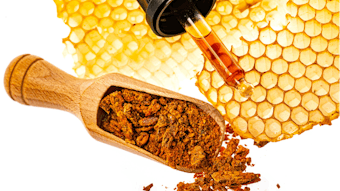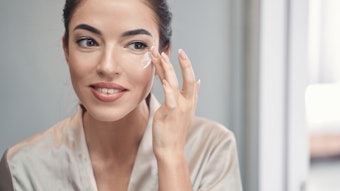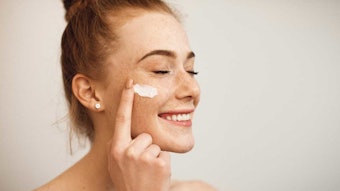
Kline has published its report monitoring personal care ingredients in the beauty industry, which states what ingredients are trending, will trend and where opportunities lie in a pandemic-adjusted world.
A Rollercoaster of Demands
Demand for color cosmetics, hair styling and sun care products declined significantly during the pandemic. The demand for cosmetic ingredients, hair fixative polymers and UV-protection ingredients took a sharp hit in 2020. While 2021 witnessed a bounce-back in demand for these ingredients, 2019 levels have not yet been regained, Kline reports.
Featured: Industry Insight: Color Highlights and Lowlights in 2020
In contrast, not only did the ingredients used in products like soaps, shampoos and hand sanitizers experience a surge in demand in 2020 but this upward trajectory continued in 2021. Demand for preservatives, surfactants, emollients and conditioning polymers soared. Consumers also placed greater emphasis on hair and skin care during the pandemic, much due to the benefits of these ingredients.
Additionally, supply chains were affected by the pandemic. The sourcing of raw materials continues to fluctuate as the lack of containers for products has doubled delivery times and led to the shortage of ingredients; in turn, leading to significant price increases for some ingredients. According to the report, this led to a domino effect that has lingered, albeit to a lesser degree.
It is noted, though, that some have benefited from supply-chain disruptions—local suppliers have reaped the rewards of the slowdown in imports of ingredients.
Beauty Rebounds
The rebound of the color cosmetics, hair styling and sun care segments positively influenced the market in 2021. Kline expects the recovery of the most impacted segments of the market to drive market growth. This trend stems from the long period of social isolation during the pandemic and consumers emerging from regional restrictions. In addition, the return to offices is expected to boost the demand for hair styling products. The sun care segment will recover as social and travel limitations are lessened, and consumers resume their pre-pandemic level of activities.
The report adds that the strong trend toward natural ingredients and clean beauty is further driving the market. Not only are consumers looking for ingredients that are plant-based, organic and naturally occurring, but they also are focused on ingredients produced in a sustainable manner and that are locally and ethically sourced.
Video: Cosmetics R&D Vlog: Packaging, Naturals and Adapting to COVID-19 Needs
For example, personal care ingredient suppliers are experiencing increased demand for plant-derived proteins over animal-derived proteins. However, natural ingredients are expensive, which could impact their growth.
Surfactant Shifts
Surfactants have also been affected by the shift toward more natural ingredients, with demand for sulfate-free products increasing. While this trend was originally witnessed in only a few niche applications, according to Kline, it has gained momentum in all market segments. At the same time, due to supply-chain disruptions and feedstock shortages caused by the rebound in the global economy, formulators have prioritized obtaining the necessary raw materials rather than focusing on sourcing sulfate-free ingredients.
The result has been a reduced focus on sulfate-free ingredients. Nevertheless, interest still exists, with alkyl polyglucosides (APGs) being the preferred alternatives. Some amino acid-based surfactants such as glutamates and sarcosinates are also experiencing increased demand, though to a lesser degree.
This trend was initially seen in developed markets such as the United States and Europe; however, it has now entered developing markets such as India. Among young Indian consumers, demand is growing for personal care products that are environmentally friendly, sulfate- and cruelty-free, and more natural. This will drive demand for these products and their ingredients in this region, further adding to opportunities.
Mild Ingredients
A similar trend toward mild ingredients is also seen in antimicrobials. Increasing regulations, limitations in use and public scrutiny regarding some of the most traditional preservatives such as formaldehyde donors, parabens, isothiazolinones and halogen organic compounds are leading to their substitution.
This will drive the growth of benzyl alcohol and organic acids such as benzoic acid/benzoates and sorbic acid/sorbates, which are expected to grow faster than other preservatives. Ingredients such as these are considered to be milder, safer and nature-identical preservatives.
Further, growing pressure from regulatory bodies and consumers about many of the preservatives is driving demand for preservative boosters, which offer multifunctional properties and increase the preservation effect in a formulation, reducing the concentration level of preservatives in finished-product formulations.
Previously: Cosmetic Winners and Losers from COVID-19: Ingredients and Products
“Personal care ingredients will play a vital role in the economic recovery of countries post-COVID-19,” says Kunal Mahajan, Project Manager in Kline’s chemicals and energy practice. “As such, companies that manufacture these ingredients are well-positioned to experience opportunities in the short term. Evonik, BASF, Ashland and Symrise are among those we’re keeping our eye on.”
Mahajan added, “A rise in the market for beauty products post-pandemic has resulted in an increase in the demand for personal care ingredients. Within the color cosmetics segment, we look for a wave of consumers using more sophisticated and dramatic makeup, particularly related to eyes and lips.”










